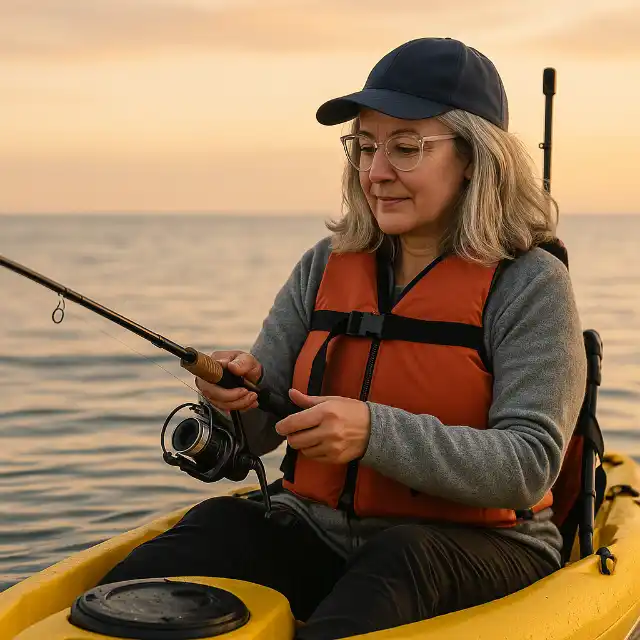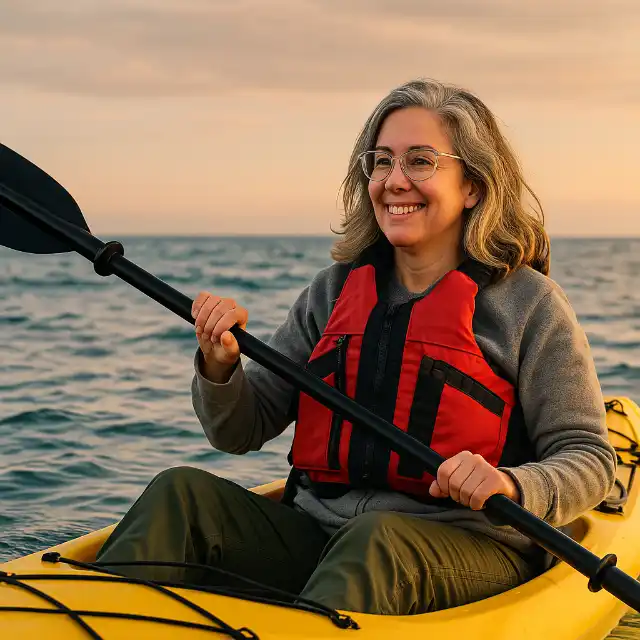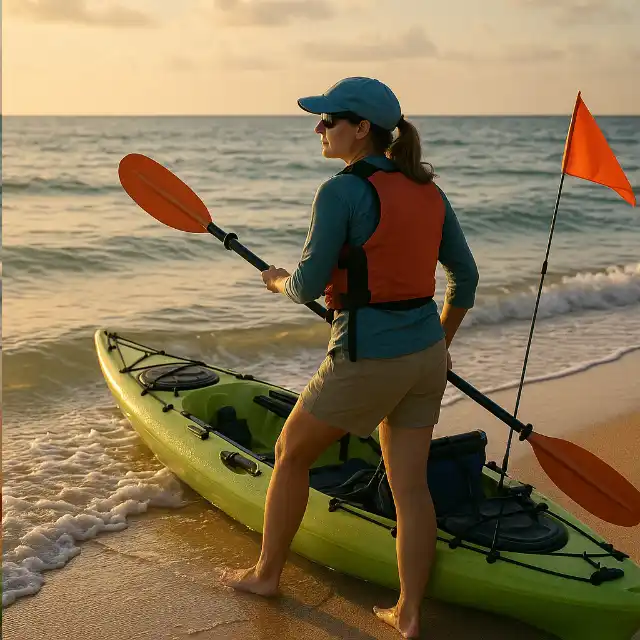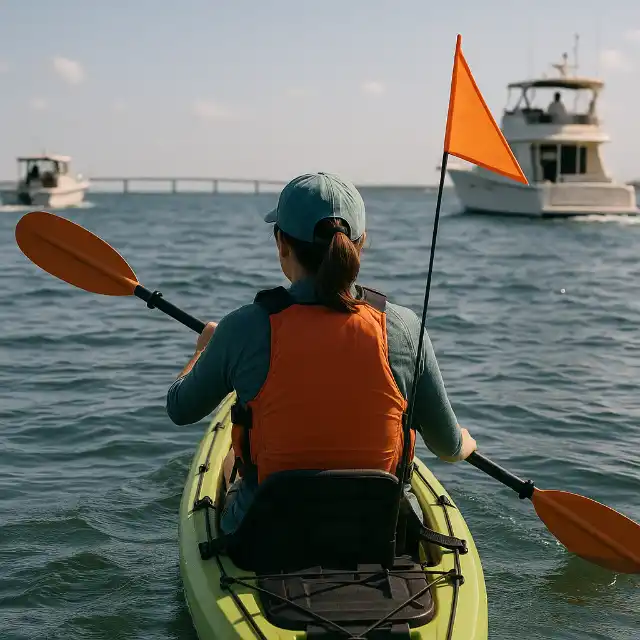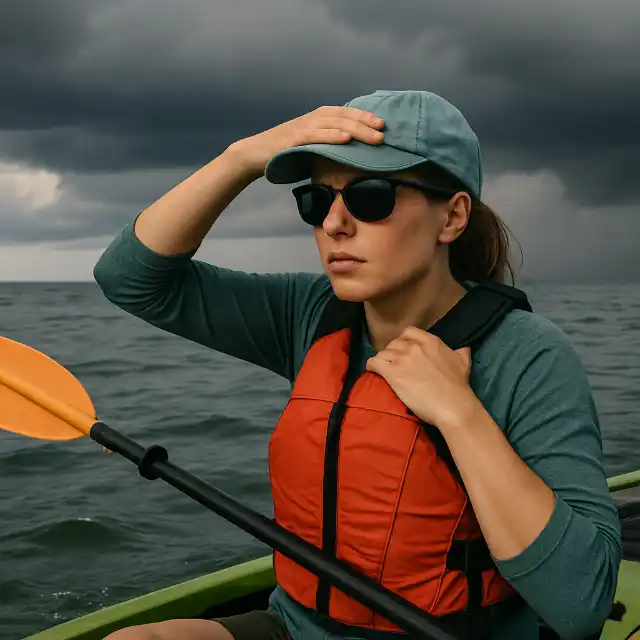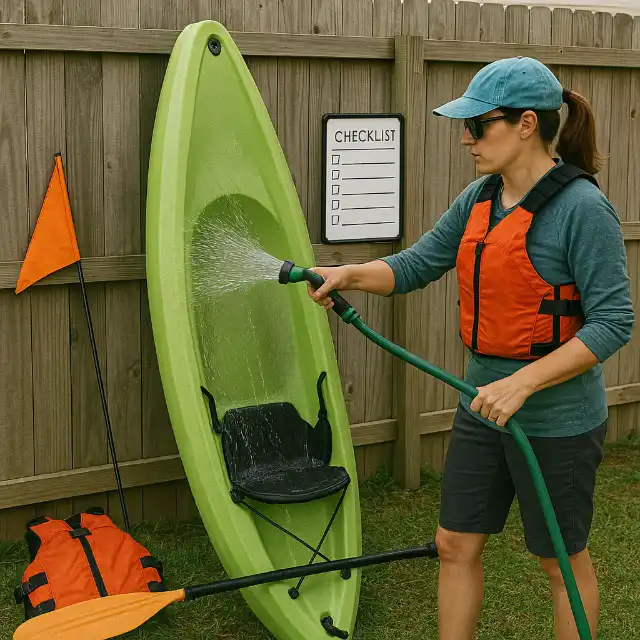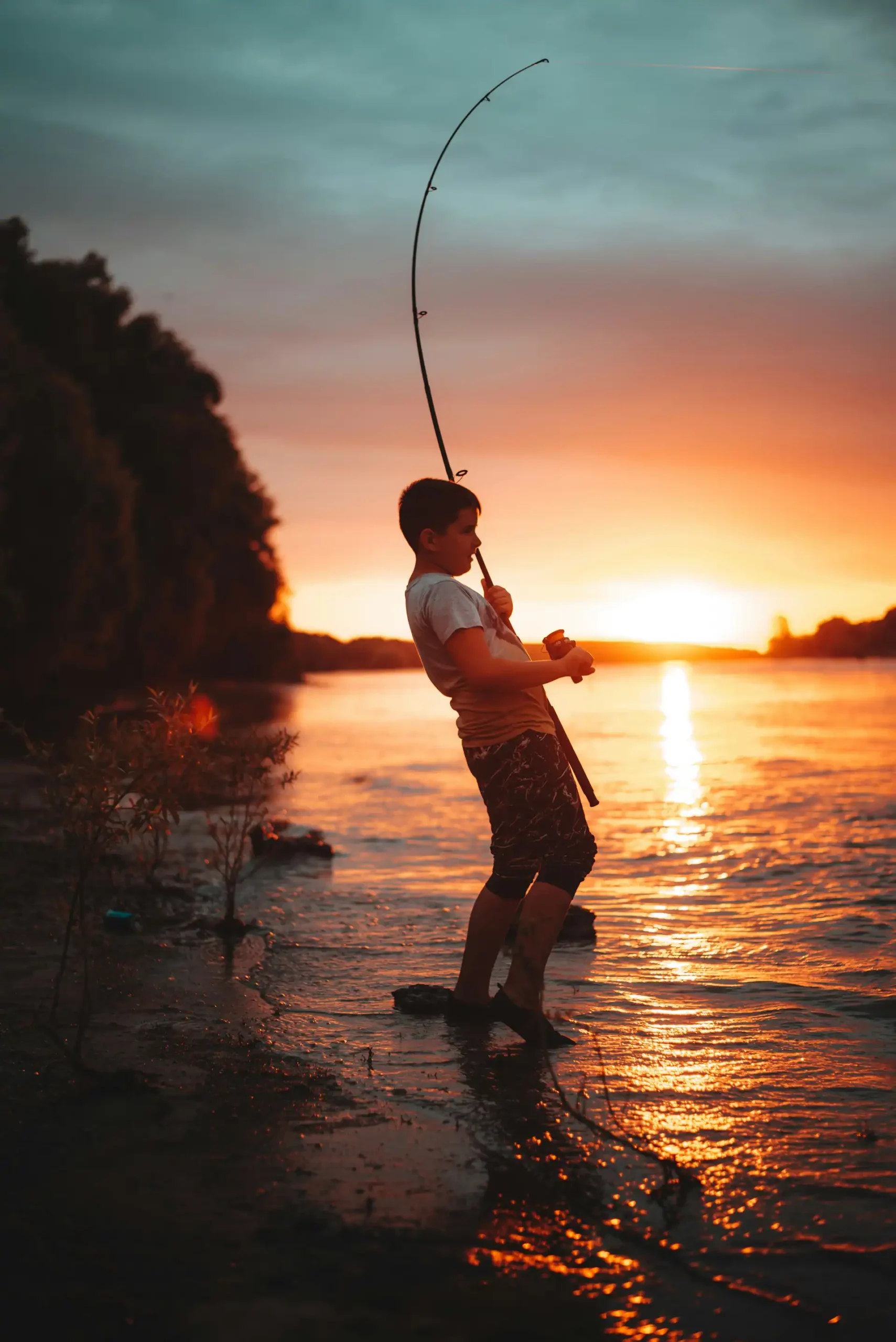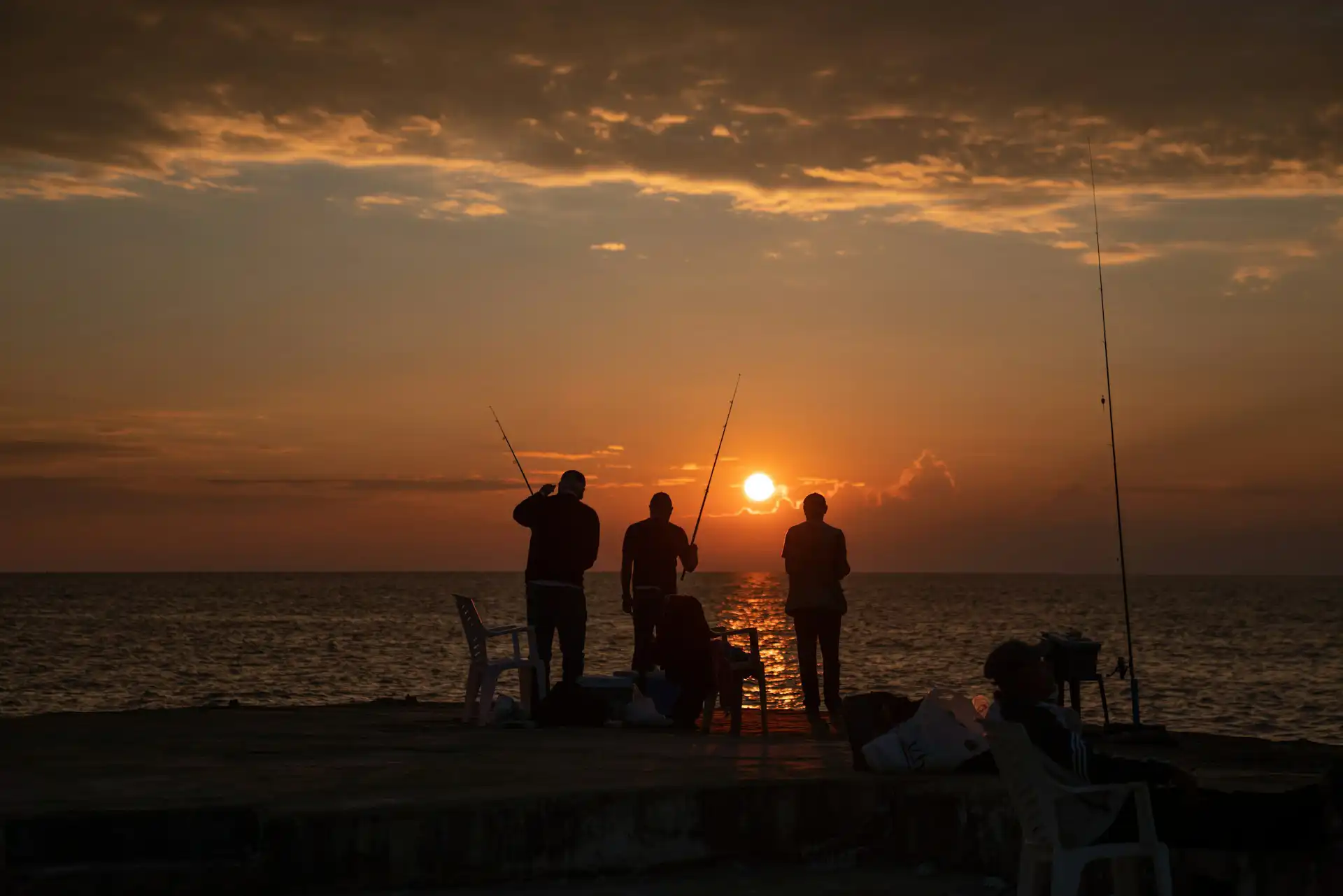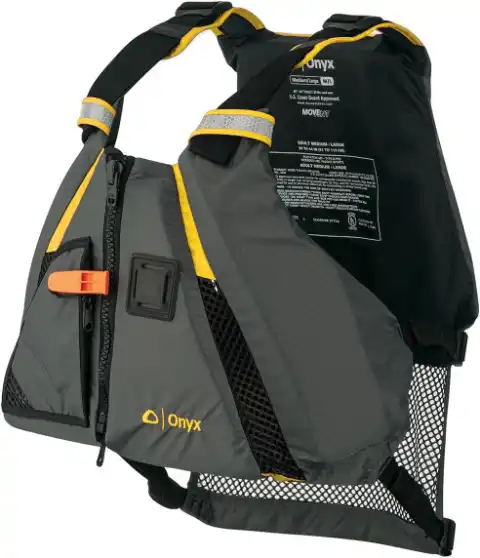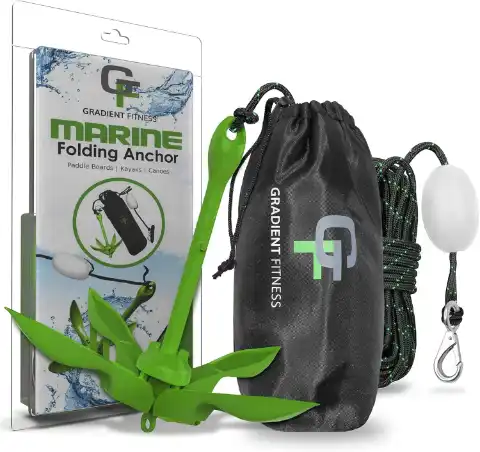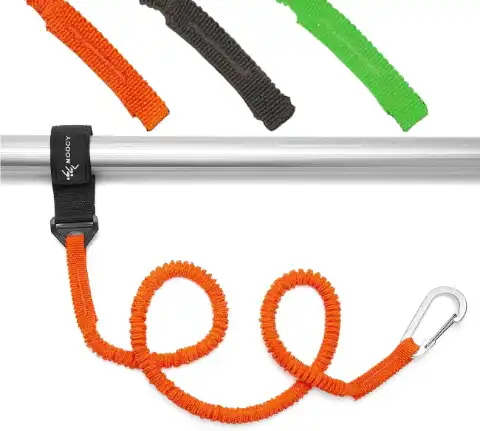Kayak fishing in open water is a unique thrill — you’re close to nature, far from crowded ramps, and in total control of your fishing experience. But with that freedom comes risk. Open water demands more preparation, better awareness, and the right gear to keep you safe and effective.
Whether you’re chasing snapper in the bay, casting for pelagics offshore, or exploring estuaries exposed to wind and tide — this guide will help you do it safely.
🧭 1. Know the Conditions Before You Go
- Weather is king: Check wind speed, direction, and swell (WillyWeather, BOM, Windy app).
- Tide and current awareness: Open water can turn dangerous when tides shift. Learn your local flow.
- Know your limits: If it looks sketchy — don’t launch. Even experienced anglers cancel trips.
🔗 Pro Tip: Always plan a “bail-out” route. Where can you land safely if conditions change suddenly?
🎒 2. Essential Safety Gear Checklist
- ✅ PFD (Life Jacket) — Must fit well and be kayak-specific (pocket-friendly, arm clearance)
- ✅ Whistle and/or flare — Legal requirement in most states
- ✅ VHF radio or mobile in dry pouch — You can’t rely on mobile signal offshore
- ✅ Personal Locator Beacon (PLB) — Your lifeline in true emergencies
- ✅ Anchor or drift chute — For staying safe when you need to pause or fish slow
- ✅ Hi-vis clothing / reflective tape — Be seen by boats
🛶 3. Choose the Right Kayak for Open Water
- Stability first: Look for wide, sit-on-top kayaks designed for fishing.
- Self-draining scuppers: So water doesn’t pool in your cockpit.
- Tracks and tie-downs: To secure gear in rough conditions.
- Pedal-powered models: Give you hands-free operation in wind or current, but are heavier.
See our guide: Top 6 Essentials for Kayak Fishing.
🧠 4. Launch and Land Smart
- Scout launch sites with minimal boat traffic and gradual entry.
- Avoid rocks and reef edges where swell may build.
- Land perpendicular to breaking waves (or wait for a gap).
- 📍Mark your entry/exit in a GPS app like Navionics or Fishbrain._
⚠️ 5. Stay Visible & Predictable
- Wear bright clothing or high-vis hats.
- Use a 360° safety flag or light pole.
- Avoid crossing busy channels — or make your path clear and deliberate.
🧊 6. Know the Signs of Trouble
- Feeling cold, shaky, or nauseous? Head in.
- Not making progress against current or wind? Drift anchor, then reassess.
- Can’t see the shoreline clearly anymore? Call it early.
- ⛔ Many accidents happen because people try to “tough it out.”
🧰 7. Post-Trip Gear Care & Debrief
- Rinse gear in fresh water — especially safety equipment like radios and flares.
- Reflect: Did anything feel unsafe? Was anything missing from your setup?
- Update your packing list for next time.
🧩 Conclusion
Kayak fishing in open water is deeply rewarding — but it’s not casual. The margin for error is smaller, the consequences greater. But with the right mindset, preparation, and safety-first setup, it becomes one of the most exciting, empowering ways to fish.
For those interested in exploring kayak fishing further, consider researching local regulations, safety guidelines, and beginner tips to ensure a rewarding and safe experience on the water. Also check out our article on the top 6 essentials for kayak fishing.



